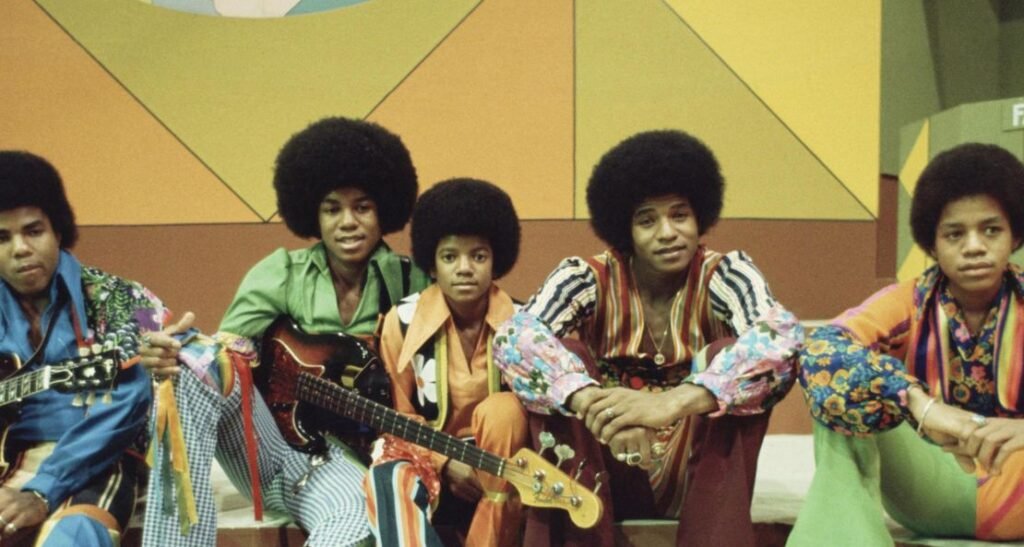Introduction
Picking up from our exploration of the rock anthems that defined the 60s, we now turn to another genre that was equally groundbreaking: Motown.
While rock music was pushing boundaries with its raw intensity, Motown was bridging divides, blending soul, pop, and R&B into a sound that resonated far and wide.
Motown was more than just music—it was a force that unified audiences and challenged societal norms, creating hits that dominated the airwaves and became anthems of a generation.
We’ll now journey through the top 10 Motown tracks that not only captured the essence of the 60s but also left a lasting impact on music history.
Just as the rock songs we previously discussed helped shape the sound of a decade, these Motown classics created a legacy of their own, one filled with smooth melodies, unforgettable hooks, and messages that still resonate today.
Let’s explore how Motown’s biggest hits helped define the era and continue to influence the music we listen to now.
1. “My Girl” by The Temptations (1964)
My Girl is one of Motown’s most iconic songs, showcasing the smooth vocal harmonies and heartfelt lyrics that became synonymous with the label’s sound.
Released in December 1964, the song was written by Smokey Robinson and Ronald White and became The Temptations’ first number-one hit on the Billboard Hot 100.
Its infectious melody, driven by James Jamerson’s bassline and the orchestral string arrangement, helped solidify Motown’s place in pop culture.
“My Girl” remains a timeless classic, often cited as one of the greatest love songs ever recorded.
2. “Stop! In the Name of Love” by The Supremes (1965)
“Stop! In the Name of Love,” released in February 1965, is one of the many chart-topping hits by The Supremes, Motown’s most successful act.
Written by the legendary songwriting team Holland-Dozier-Holland, the song’s catchy melody and Diana Ross’s emotive lead vocals helped it reach number one on the Billboard Hot 100.
The song’s iconic choreography, with the “stop” hand gesture, became a signature moment in pop culture.
“Stop! In the Name of Love” exemplifies the polished, sophisticated sound that Motown brought to mainstream audiences.
3. “I Heard It Through the Grapevine” by Marvin Gaye (1968)
Marvin Gaye’s “I Heard It Through the Grapevine” is one of Motown’s most enduring hits.
Released in October 1968, the song was originally recorded by Gladys Knight & the Pips but became a massive hit when Gaye’s version was released.
The song, written by Norman Whitfield and Barrett Strong, is noted for its haunting melody and Gaye’s soulful delivery.
It became the best-selling Motown single of the 1960s and solidified Marvin Gaye’s reputation as one of the era’s leading vocalists.
The song’s themes of betrayal and suspicion resonated deeply with listeners, making it a timeless classic.
4. “Dancing in the Street” by Martha and the Vandellas (1964)
Released in July 1964, “Dancing in the Street” by Martha and the Vandellas became an anthem for the civil rights movement.
Written by Marvin Gaye, William “Mickey” Stevenson, and Ivy Jo Hunter, the song’s upbeat, danceable rhythm belies its deeper message of unity and social change.
The track was a top 10 hit in the US and UK, and its infectious energy made it a favourite at parties and protests alike.
“Dancing in the Street” is a prime example of how Motown’s music could be both entertaining and socially relevant.
5. “Ain’t No Mountain High Enough” by Marvin Gaye & Tammi Terrell (1967)
“Ain’t No Mountain High Enough” is one of the most famous duets in Motown history, showcasing the chemistry between Marvin Gaye and Tammi Terrell.
Released in April 1967, the song was written by Nickolas Ashford and Valerie Simpson and became a top 20 hit on the Billboard Hot 100.
Its uplifting message and powerful vocals made it an enduring classic, later covered by Diana Ross, who took it to number one in 1970.
The song’s success cemented Gaye and Terrell’s status as one of Motown’s most beloved duos.
6. “Reach Out I’ll Be There” by The Four Tops (1966)
“Reach Out I’ll Be There,” released in August 1966, is one of The Four Tops’ biggest hits and a quintessential Motown track.
Written and produced by Holland-Dozier-Holland, the song features a driving beat, dynamic orchestration, and Levi Stubbs’s impassioned lead vocals.
It became a number one hit on the Billboard Hot 100 and is often considered one of the defining songs of the 60s.
The song’s message of support and solidarity resonated with a wide audience, making it a staple of Motown’s catalogue.
7. “Where Did Our Love Go” by The Supremes (1964)
“Where Did Our Love Go” was the breakthrough hit for The Supremes, propelling them to international stardom.
Released in June 1964, the song was another masterpiece by Holland-Dozier-Holland and became the group’s first number one hit on the Billboard Hot 100.
Its minimalist arrangement and catchy hook made it an instant hit, and it helped establish The Supremes as Motown’s leading act.
The song’s success marked the beginning of a string of number-one hits for the group, solidifying their place in music history.
8. “I Want You Back” by The Jackson 5 (1969)
The Jackson 5’s “I Want You Back” was a game-changer for Motown, introducing the world to the prodigious talent of Michael Jackson.
Released in October 1969, the song was written and produced by The Corporation, a team of Motown writers and producers.
Its infectious energy, funky bassline, and young Michael’s charismatic vocals made it a number one hit on the Billboard Hot 100.
“I Want You Back” was the first of four consecutive number-one hits for The Jackson 5, and it marked the beginning of Michael Jackson’s legendary career.
9. “What’s Going On” by Marvin Gaye (1971)
While technically released in 1971, “What’s Going On” by Marvin Gaye was recorded during the late 60s and represents the culmination of Motown’s evolution in that decade.
The song was a departure from the traditional Motown sound, featuring a socially conscious message and innovative production.
Written by Gaye, Renaldo “Obie” Benson, and Al Cleveland, it addressed the issues of war, poverty, and civil unrest, resonating deeply with the audience.
The song’s success paved the way for Gaye’s critically acclaimed album of the same name, which became one of the most important records of its time.
10. “Shop Around” by The Miracles (1960)
“Shop Around,” released in October 1960, was Motown’s first million-selling single and helped establish the label’s reputation.
Written by Smokey Robinson and Berry Gordy, the song features Robinson’s smooth vocals and a catchy melody that appealed to both black and white audiences.
“Shop Around” reached number two on the Billboard Hot 100 and number one on the R&B chart, setting the stage for Motown’s success throughout the 60s.
It was a breakthrough for The Miracles and for Smokey Robinson as a songwriter, solidifying his role as one of Motown’s key figures.
Conclusion
Motown’s influence on music in the 1960s is undeniable. These songs, much like the rock anthems we previously explored, didn’t just climb the charts—they became part of the cultural fabric.
Where rock pushed boundaries with raw energy and rebellion, Motown carved out its own legacy with a blend of soulful melodies, tight harmonies, and lyrics that spoke to both personal and collective experiences.
The transition from Dylan’s introspective lyrics and Hendrix’s electrifying guitar riffs to the polished production and poignant emotion of Motown showcases the vast diversity of the decade’s sound.
Each track in this collection brought something unique to the table, offering a different lens through which to view the social and musical changes of the time.
Whether it was Marvin Gaye’s haunting message in “I Heard It Through the Grapevine” or the vibrant energy of The Jackson 5’s “I Want You Back,” Motown provided a soundtrack to the joys, struggles, and hopes of a generation.
As we move from the electric beats of rock to the rhythmic grooves of Motown, it’s clear that the 60s were a time when music was not just heard but felt deeply.
With Motown’s melodies still echoing in today’s music, our journey through the decade is far from over.
Next, we’ll dive into the folk songs that brought voices of change to the forefront.


